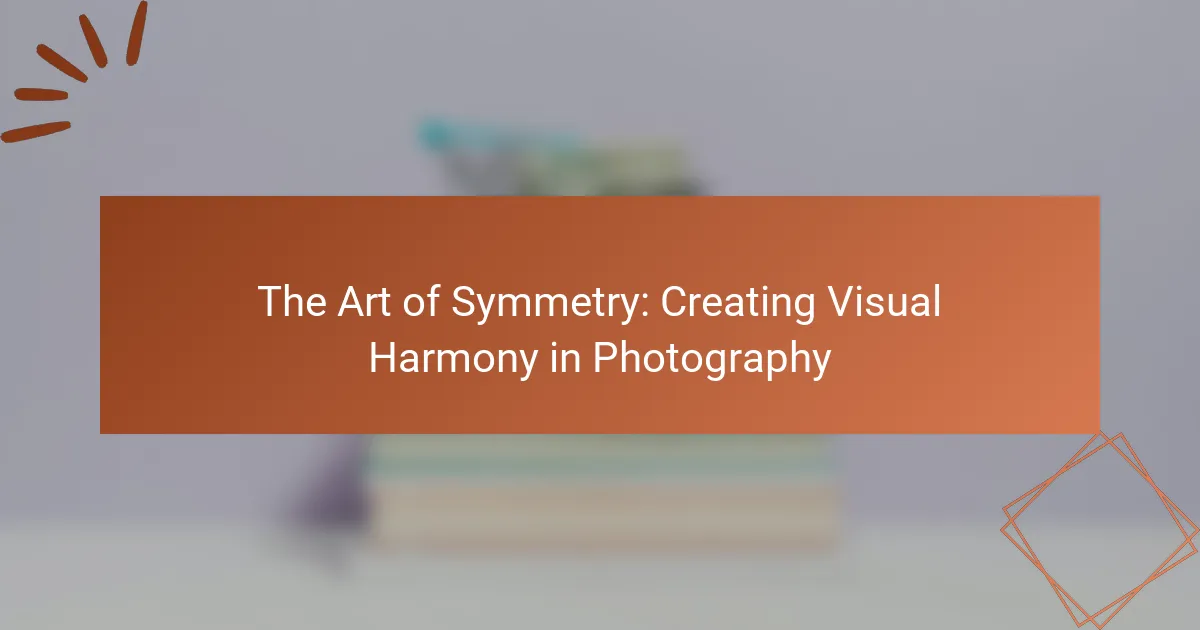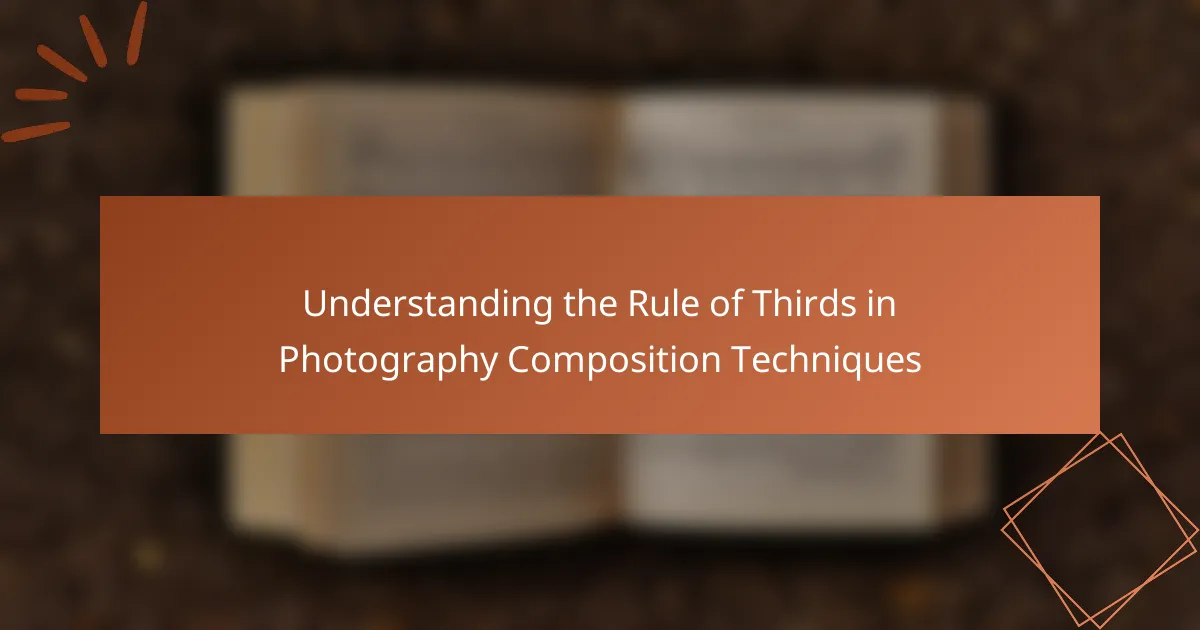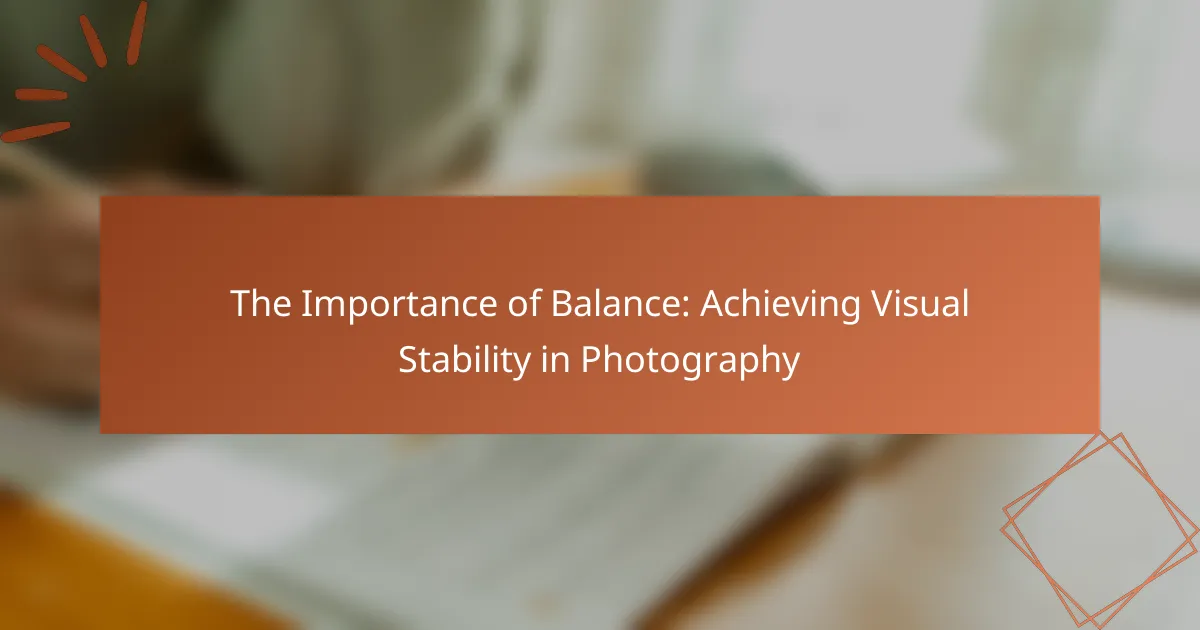Patterns in composition in photography are defined as repeated elements, such as shapes, colors, or textures, that create visual interest and enhance storytelling. This article explores the significance of repetition and rhythm in photography, detailing types of repetition, including visual, thematic, and structural. By recognizing and utilizing these patterns, photographers can establish balance, guide the viewer’s eye, and evoke emotions, ultimately leading to more compelling images. The discussion highlights how effective use of repetition and rhythm contributes to visual harmony and memorability in photographic compositions.
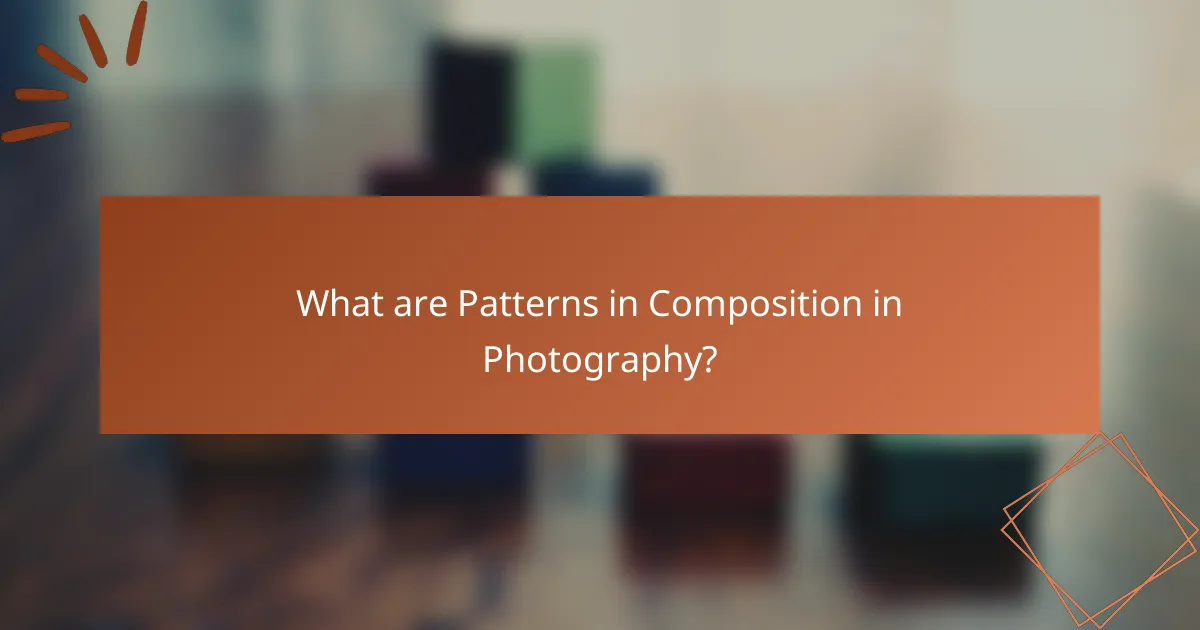
What are Patterns in Composition in Photography?
Patterns in composition in photography refer to the repeated elements that create visual interest. These patterns can be shapes, colors, or textures that recur throughout an image. They help establish rhythm and harmony in a photograph. Recognizing patterns can guide the viewer’s eye and enhance storytelling. Common examples include lines in architecture or repetitive natural forms. Patterns can evoke emotions and set the mood of the photograph. They are fundamental in creating balance and structure within the composition. Understanding patterns allows photographers to craft more compelling images.
How do Repetition and Rhythm play a role in Photography?
Repetition and rhythm are essential elements in photography that create visual harmony. Repetition involves the use of similar elements throughout a composition. This can include shapes, colors, or patterns that draw the viewer’s eye. Rhythm refers to the visual tempo created by the arrangement of these repeated elements. It guides the viewer’s gaze through the image.
Together, repetition and rhythm can enhance the storytelling aspect of a photograph. For example, a series of trees in a landscape can create a rhythmic pattern that leads the eye along a path. This technique can evoke emotions and convey movement.
Photographers often use these principles to establish a focal point. A repeated element can highlight the main subject, making it stand out. This is a common strategy in portrait photography, where a consistent background can emphasize the subject.
In summary, repetition and rhythm in photography contribute to composition and viewer engagement. They create a cohesive visual experience that can enhance the impact of the image.
What is the significance of repetition in visual storytelling?
Repetition in visual storytelling enhances recognition and understanding. It creates a sense of rhythm, guiding viewers through the narrative. Repeated elements can emphasize key themes or emotions. This technique can also establish visual harmony and coherence. For example, a series of similar shapes can unify a composition. Studies show that repetition aids memory retention. Familiar patterns make images more relatable and engaging. Thus, repetition is a powerful tool in conveying messages effectively.
How can rhythm enhance the viewer’s experience in a photograph?
Rhythm enhances the viewer’s experience in a photograph by creating a sense of movement and flow. It guides the viewer’s eye through the composition. This leads to a more engaging and dynamic interaction with the image. Rhythm can be established through repeating elements, such as lines, shapes, or colors. These repeated elements create patterns that evoke emotions and convey messages. Studies show that images with rhythmic qualities are often perceived as more visually appealing. According to research by the University of California, Berkeley, rhythm in visual arts can increase viewer retention and emotional response. Thus, rhythm plays a crucial role in enhancing the overall impact of a photograph.
Why are Patterns important in Composition?
Patterns are important in composition because they create visual interest and harmony. They guide the viewer’s eye through the image. Patterns can establish a rhythm, making the composition more engaging. Repetition of shapes or colors can evoke emotions and convey messages. Studies show that images with clear patterns are more memorable. Patterns also help in organizing elements within the frame. They can lead to a stronger focal point, enhancing the overall impact of the photograph.
What psychological effects do patterns have on viewers?
Patterns evoke various psychological effects in viewers. They can create a sense of order and predictability. This leads to increased comfort and familiarity. Patterns also enhance visual appeal, capturing attention effectively. They can elicit emotional responses, such as calmness or excitement, depending on their nature. Research indicates that symmetrical patterns are often perceived as more attractive. This perception can influence viewer engagement with the composition. Additionally, repetitive patterns can induce a meditative state, promoting relaxation. Overall, patterns play a crucial role in shaping viewer perception and emotional response in visual compositions.
How can understanding patterns improve a photographer’s skills?
Understanding patterns can significantly enhance a photographer’s skills. Patterns create visual interest and guide the viewer’s eye. Recognizing and utilizing patterns helps in composing balanced and harmonious images. Photographers can leverage repetition to create rhythm, making their work more engaging. Patterns can also evoke emotions and convey messages effectively. For instance, the use of leading lines can draw attention to a focal point. Studies show that images with strong compositional patterns are often more memorable. Mastering patterns allows photographers to differentiate their style and improve their storytelling abilities.
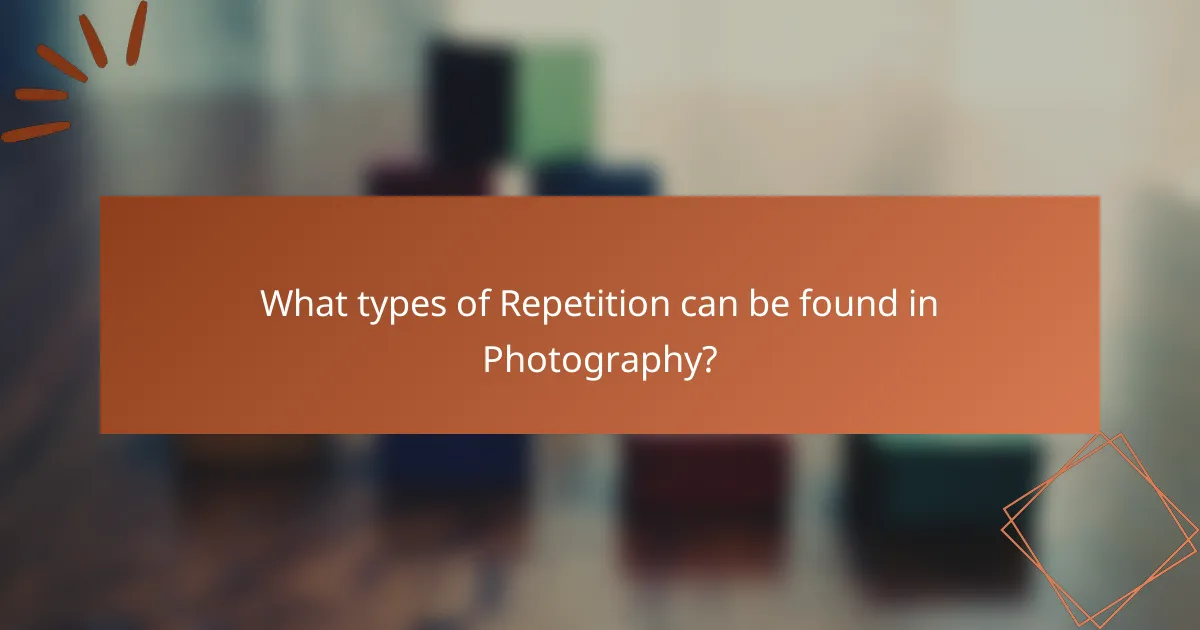
What types of Repetition can be found in Photography?
There are several types of repetition found in photography. These include visual repetition, thematic repetition, and structural repetition. Visual repetition involves repeating elements like shapes, colors, or patterns within a composition. Thematic repetition focuses on recurring subjects or motifs that convey a specific message. Structural repetition pertains to the arrangement of elements that create a sense of rhythm or flow in the image. Each type of repetition enhances composition and draws attention to key aspects of the photograph.
How does Symmetrical Repetition differ from Asymmetrical Repetition?
Symmetrical Repetition involves elements arranged in a balanced and mirrored way. This creates harmony and order in a composition. Asymmetrical Repetition, on the other hand, features elements that are unbalanced yet still create visual interest. This approach often leads to dynamic and engaging compositions.
Symmetrical Repetition provides a sense of stability. It is commonly used in architectural photography. Asymmetrical Repetition encourages movement and tension within the frame. It is often seen in nature photography, where balance is not strictly adhered to.
Both types of repetition play crucial roles in composition. They influence how viewers perceive and interact with images.
What are examples of symmetrical repetition in photography?
Examples of symmetrical repetition in photography include reflections in water, architectural facades, and patterns in nature. Reflections in water create a mirrored effect, enhancing symmetry. Architectural facades often feature repeated columns or windows, establishing a balanced composition. Patterns in nature, such as flower petals or tree branches, can also exhibit symmetrical repetition. These examples demonstrate how symmetry can enhance visual appeal and create harmony in photographs.
How can asymmetrical repetition create dynamic compositions?
Asymmetrical repetition can create dynamic compositions by introducing visual tension and interest. This technique breaks the monotony of symmetrical arrangements. It allows for a more organic and spontaneous feel in the composition. Asymmetrical repetition draws the viewer’s eye across the frame. It encourages exploration of different elements within the image. This method can highlight contrast and variety in shapes, colors, and sizes. For example, placing a cluster of small objects near a larger one can create balance while maintaining dynamism. Such compositions often evoke emotional responses, making them more engaging.
What are the different forms of Rhythm in Photography?
The different forms of rhythm in photography include repetition, alternation, progression, and contrast. Repetition involves using similar elements to create a sense of harmony. This can be seen in patterns that recur throughout an image. Alternation introduces variation by alternating subjects or colors, providing visual interest. Progression refers to a gradual change in size, color, or shape, guiding the viewer’s eye through the composition. Contrast, on the other hand, creates rhythm through the juxtaposition of differing elements. Each form of rhythm contributes to the overall composition and emotional impact of a photograph.
How does visual rhythm compare to musical rhythm?
Visual rhythm in photography refers to the visual flow created by repeated elements. It establishes a sense of movement and harmony through patterns, shapes, and colors. Musical rhythm, on the other hand, is the timing and arrangement of sounds in music. It creates a structured flow through beats and tempo. Both forms of rhythm rely on repetition to evoke emotions and guide the audience’s experience. For example, visual rhythm can be seen in a series of similar shapes in a photograph, while musical rhythm can be observed in the consistent beats of a song. Both engage the audience by creating a predictable yet dynamic experience.
What techniques can photographers use to create rhythm?
Photographers can create rhythm through techniques such as repetition, leading lines, and patterns. Repetition involves capturing similar elements multiple times within a frame. This technique establishes a visual beat that guides the viewer’s eye. Leading lines direct attention along a path, enhancing flow and movement in the composition. Patterns can be found in nature or architecture, providing a sense of order and continuity. These techniques collectively enhance the visual experience and can evoke emotions in viewers. By effectively using rhythm, photographers can create compelling images that resonate with audiences.
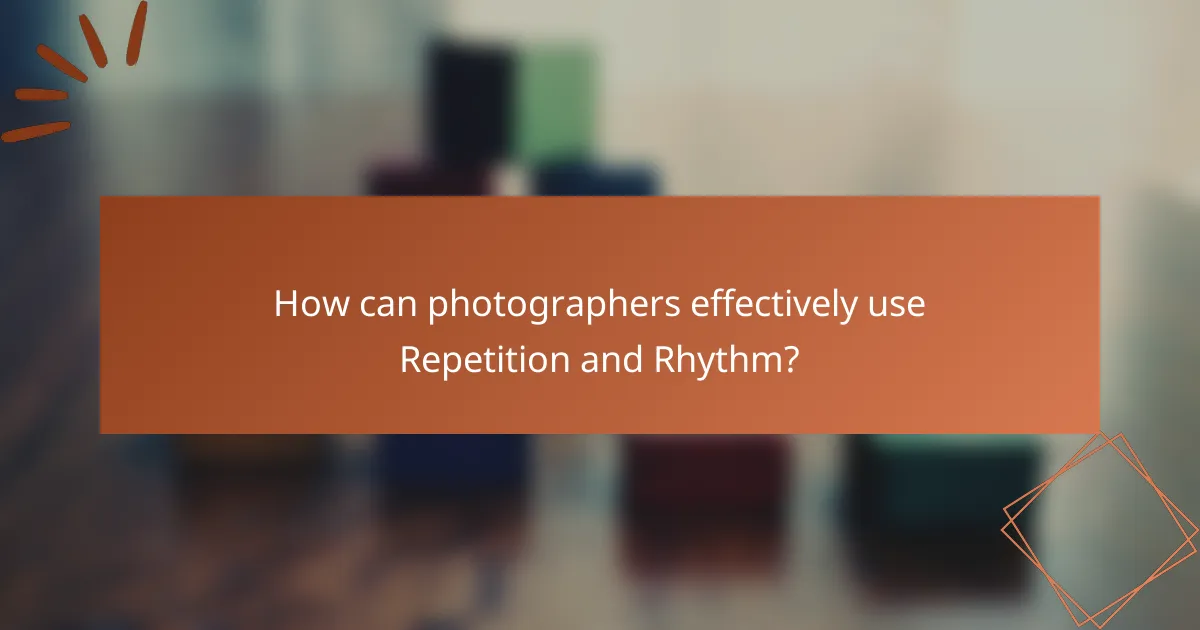
How can photographers effectively use Repetition and Rhythm?
Photographers can effectively use repetition and rhythm to create visual harmony in their images. Repetition involves using similar elements, such as shapes or colors, to draw the viewer’s eye. Rhythm refers to the arrangement of these elements to create a sense of movement or flow. For example, a series of trees lined up in a row creates a repetitive pattern. This can guide the viewer’s gaze through the photograph. Additionally, varying the spacing between repeated elements can enhance the rhythm. This approach can evoke emotions and lead to a more engaging composition. Studies show that images with strong patterns are often more memorable and impactful.
What tips can help photographers incorporate patterns into their work?
Photographers can incorporate patterns into their work by observing their surroundings for repetition. Look for lines, shapes, and textures that create visual harmony. Use leading lines to guide the viewer’s eye through the pattern. Experiment with different angles to capture patterns from unique perspectives. Utilize natural light to enhance the details of the patterns. Frame the subject to emphasize the pattern’s impact within the composition. Pay attention to color contrasts that can make patterns stand out. Lastly, practice patience and wait for the right moment to capture the pattern in its best form.
How can one practice identifying patterns in everyday scenes?
One can practice identifying patterns in everyday scenes by observing their surroundings closely. Start by taking walks in familiar areas. Focus on shapes, colors, and textures that repeat. Use a camera or smartphone to capture these patterns. Review the images to analyze the recurring elements. Experiment with different angles and perspectives to reveal hidden patterns. Engage in daily sketching or note-taking to document observations. This method enhances awareness and sharpens pattern recognition skills. Studies show that regular practice improves visual perception and creativity in photography.
What common mistakes should photographers avoid when using patterns?
Photographers should avoid overusing patterns, which can lead to visual monotony. Excessive repetition may distract from the main subject. Ignoring the background can result in patterns that compete with the focal point. Misaligning patterns can create visual tension rather than harmony. Failing to consider scale can cause patterns to overwhelm the composition. Not varying the perspective can limit creative expression. Lastly, neglecting lighting can diminish the impact of patterns in the image. Each of these mistakes can significantly undermine the effectiveness of patterns in photography.
How can analyzing successful photographs enhance understanding of Patterns?
Analyzing successful photographs enhances understanding of patterns by revealing compositional techniques. Photographs often utilize repetition, symmetry, and rhythm to create visual harmony. Identifying these elements helps photographers recognize effective strategies. For instance, studies show that images with clear patterns are more engaging. Research indicates that patterns guide the viewer’s eye, creating a sense of order. Understanding these principles can improve a photographer’s ability to compose striking images. Analyzing successful works allows for the exploration of how patterns influence perception. This knowledge ultimately informs better photographic practices.
What should photographers look for when studying the work of others?
Photographers should look for compositional techniques in the work of others. They should analyze the use of repetition and rhythm in images. Observing how patterns create visual interest is crucial. Noting the balance of elements can enhance understanding. Examining color schemes reveals emotional impacts. Studying the framing and perspective offers insights into storytelling. Recognizing how light and shadow interact can improve technical skills. These observations can lead to personal growth and innovation in a photographer’s own work.
How can critique and feedback improve pattern usage in photography?
Critique and feedback can significantly enhance pattern usage in photography. Constructive criticism helps photographers identify patterns that may not be immediately obvious. Feedback can reveal how effectively patterns contribute to the overall composition. It encourages photographers to experiment with different patterns and compositions. Engaging with critiques fosters a deeper understanding of visual rhythm. This understanding can guide photographers in making intentional choices about pattern integration. Studies show that artists who seek feedback improve their skills at a faster rate. For instance, a 2017 study by the University of California found that peer feedback increased creative output in visual arts.
The main entity of the article is ‘Patterns in Composition’ within the context of photography. The article explores the significance of patterns, repetition, and rhythm in enhancing visual interest and storytelling in photographic compositions. Key topics include the types of repetition, the psychological effects of patterns on viewers, and techniques photographers can use to effectively incorporate these elements into their work. Additionally, the article discusses common mistakes to avoid and the benefits of analyzing successful photographs to improve pattern usage. Understanding these concepts can significantly enhance photographers’ skills and the emotional impact of their images.

